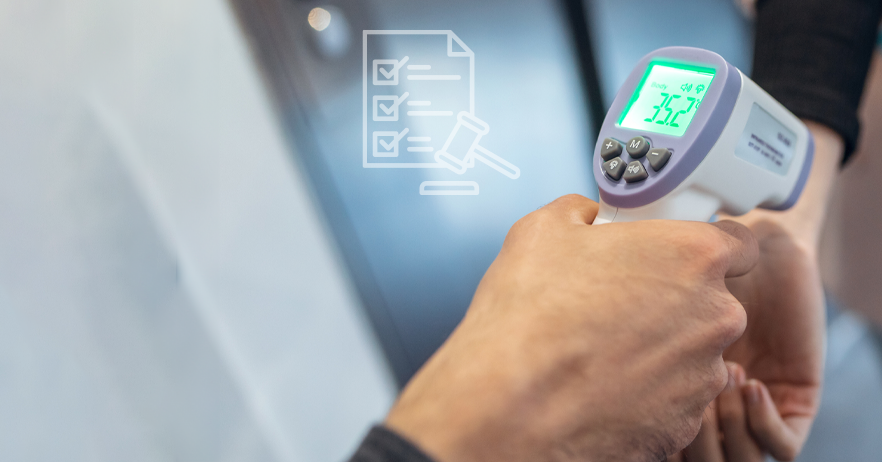In the realm of medical devices, adhering to regulatory standards is of paramount importance to ensure patient safety and product effectiveness. Medical device companies target two primary markets for introduction of their products — United States and Europe. The two key regulatory players in these markets are the European Union Medical Device Regulation (EU MDR) in Europe and United States Food and Drug Administration (FDA) in the US. Compliance with the mandates of these regulatory bodies also enables expedited product acceptance in other parts of the world.
Navigating the intricacies of these regulations can be complex, especially when your products need to comply with both standards. Working on these regulations independently could lead to duplicity of effort, increased time, and cost. This blog identifies the overlaps and differences between US FDA and EU MDR requirements and recommends strategies for streamlining preparation for dual compliance.
Understanding the Overlaps and Differences
While the US FDA and EU MDR regulations aim to achieve the same fundamental goals of ensuring the safety and efficacy of medical devices, there are notable differences and similarities in their requirements. Understanding these nuances is crucial to streamline your preparation effectively.
1. Classification and Risk Assessment
- EU MDR: The EU MDR classifies medical devices into four risk classes (I, IIa, IIb, and III) based on potential risks to patients and operators.
- US FDA: The FDA uses a similar classification system but with different criteria. Devices are categorized into Class I, II, or III based on factors like intended use, indications and risk.
2. Clinical Data Requirements
- EU MDR: Stricter clinical data requirements demand more extensive clinical evidence for higher-risk devices. Clinical investigations may be mandatory for devices without equivalent products on the market.
- US FDA: Clinical data requirements vary based on device classification. Premarket Approval (PMA) applications typically require clinical trials, while 510(k) submissions can rely on predicate devices and existing literature.
3. Post-Market Surveillance
- EU MDR: Robust post-market surveillance is emphasized, including Periodic Safety Update Reports (PSURs) and Post-Market Clinical Follow-up (PMCF) studies.
- US FDA: Post-market surveillance involves adverse event reporting and maintaining Quality Systems (QS) requirements.
Streamlining Documentation for Dual Compliance
Efficiently preparing for both US FDA and EU MDR compliance calls for a systematic approach that optimizes documentation, while addressing the unique requirements of each regulation.
1. Unified Risk Management
Begin by conducting a comprehensive risk assessment aligned with both regulations' criteria. This ensures that your device's risk classification is consistent across the FDA and EU MDR frameworks.
2. Documentation Mapping
- Identify documentation that can be shared between submissions to reduce redundancy. For example, there is a lot of overlap between ISO 13485, 21 CFR 820 and EU MDR article 10(9) QMS requirements
- Create a matrix that cross-references FDA and EU MDR requirements, highlighting common elements.
3. Clinical Data Planning
- Develop a comprehensive clinical data strategy that aligns with both regulatory bodies' expectations.
- Leverage clinical data gathered for one submission to support the other, while also fulfilling specific requirements.
Tip: ensure your clinical data is representative of the target population in both jurisdictions.
4. Labelling and IFU Harmonization
- Create labelling and Instructions for Use (IFU) that meet the requirements of both regions.
- Ensure the language, symbols and safety information are consistent throughout.
5. Post-Market Surveillance Integration
- Establish a single post-market surveillance system that captures data required by both regulations. Use automation where possible for the collection of such data.
- Harmonize adverse event reporting processes to streamline reporting to both authorities, and where possible, have this in the same procedure.
6. Regulatory Expertise
- Enlist the support of regulatory experts well-versed in both US FDA and EU MDR requirements. Their guidance can help you navigate complexities, identify synergies and ensure compliance without duplicating efforts.
Navigating the dual landscape of US FDA and EU MDR compliance for medical devices requires a well-orchestrated strategy that combines a deep understanding of regulatory requirements with streamlined documentation practices. By recognizing overlaps, understanding the differences, and implementing effective strategies, manufacturers can efficiently prepare for both sets of regulations while ensuring their products meet the highest safety and quality standards. This approach not only saves time and resources, but also enhances the global marketability of medical devices in an ever-evolving regulatory environment.

